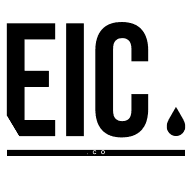How Do You Onboard New Editors into Your Team's Workflow?
Picture the onboarding process of a new editor as a delicate weaving of threads into the fabric of a seasoned tapestry. When top minds like an Editor in Chief share insights, their wisdom threads effortlessly through their methods. From catalyzing growth through immersion to implementing structured onboarding processes, explore these expert approaches to successful onboarding.
- Catalyze Growth Through Immersion
- Utilize Editathons for Rapid Adaptation
- Create a Multimedia Immersion Experience
- Pair New Editors With Experienced Mentors
- Provide Clear Documentation and Style Guides
- Offer Workshops on Tools and Software
- Implement a Structured Onboarding Process
Catalyze Growth Through Immersion
As the Editor-in-Chief at Best Hardware Supply, I’ve discovered that unconventional methods often yield the best results. Our most effective strategy for integrating new editors isn’t through rigorous style guides or endless training sessions but by throwing them into the deep end—literally.
We start with a real project, under real pressure. It’s sink or swim. This approach quickly reveals not only their editing prowess but also their resilience and capacity to adapt under fire. Critics argue it’s too harsh, yet our team’s unmatched output and low turnover speak volumes. We don’t coddle; we catalyze.

Utilize Editathons for Rapid Adaptation
We've instituted 'editathons' as one way to help onboard new editors into our team's workflow. Editathons are intensive editing sessions that we organize for our newly hired editors within a week of their first day at work. We set the new hires a typified text, ranging from a technical doc to a piece of creative content, and they have to edit in a time-bound session, to do so as optimally as they can. The session is led by senior editors at Wonder but with a twist - there's a live critique session immediately following the edit where feedback is given in a group setting.
This works well because it also immerses new editors in the breadth of work they will be exposed to, while placing high pressure on them to adapt rapidly to our editorial standards. The live critique element helps instill an open culture of improvement from day one. It's not just about learning to edit according to our guidelines; it's about humility and resilience, the ability to sit with and process feedback graciously and constructively. This level of immersion in new working practices helps to speed up the learning curve while creating a virtuous circle of involvement and support for fledgling editors as they expand their work.

Create a Multimedia Immersion Experience
One technique we've created to help onboard and train new editors is what I call a 'multimedia immersion experience.' Boxed out by a large graphic showing the various channels through which the organization delivers its content, the new hire is presented with multimedia items—composed of video, audio, and text—all of which need editing. Each multimedia item has been purposefully seeded with commonly made errors or stylistic challenges that are often found in that type of content and delivered to that audience.
What's different about the training is that it simulates that messiness: each new editor works in these multimedia pieces, makes edits and improvements, and then assembles her edits for a group to discuss. This means that editors are not only learning technical skills but also developing a real feel for the holistic nature of the narrative or multimedia cohesion, something that's crucial to our editorial goals. It gets new editors to think beyond the text. It gets them thinking about content not only as it exists on the page but as a gestalt of moves that play across the page and beyond. It's a great way to diversify skills quickly and to integrate those skills into a complex workflow.

Pair New Editors With Experienced Mentors
Pairing new editors with experienced mentors can significantly ease their transition into the team's workflow. This method allows new team members to learn directly from those who are well-versed in the team's processes and expectations. The exchange of knowledge and feedback in a one-on-one setting fosters a supportive environment.
Additionally, mentors can provide real-time guidance and answer questions promptly. Such hands-on experience can be invaluable for new editors who might feel overwhelmed initially. Encourage your team to establish a mentor-mentee program today.
Provide Clear Documentation and Style Guides
Providing clear documentation and style guides is essential for maintaining consistency in editing work. These resources can serve as a go-to reference for new editors, helping them navigate the nuances of the team's standards. Written guides can cover everything from grammatical preferences to workflow procedures.
By having this information readily available, new editors can independently resolve their queries. Documentation also ensures that everyone adheres to the same rules, which is crucial for uniform output. Start developing comprehensive documentation to help your new team members.
Offer Workshops on Tools and Software
Offering workshops on specific tools and software ensures that new editors are well-equipped to handle their tasks. Such workshops can familiarize them with the technical aspects of the workflow and increase their efficiency. These training sessions can be interactive, allowing new editors to ask questions and engage with the material actively.
It's crucial to make these sessions engaging to keep attention high and effectively convey the information. Additionally, workshops can cover best practices and tips for using tools more effectively. Organize regular workshops to keep your team up to speed with the latest tools.
Implement a Structured Onboarding Process
Implementing a structured onboarding process with defined milestones can provide new editors with a clear roadmap for their growth. This structure can help them understand their progress and what is expected at each stage of their training. Setting milestones also allows for periodic reviews and feedback sessions.
These sessions can be used to address any challenges they might be facing. A clear onboarding process reduces ambiguity and sets clear expectations from the start. Design an onboarding process that guides your new members through their journey systematically.

